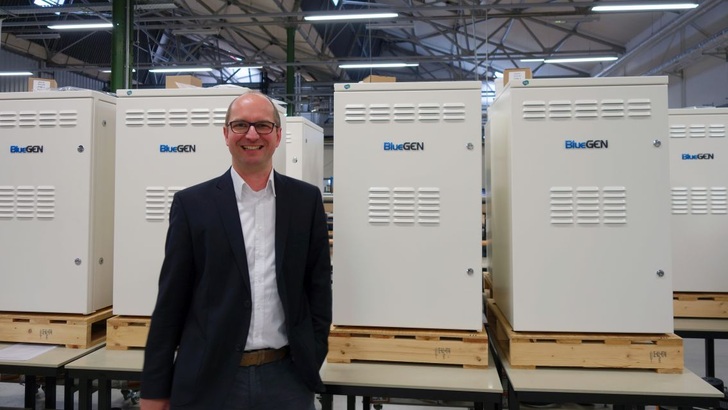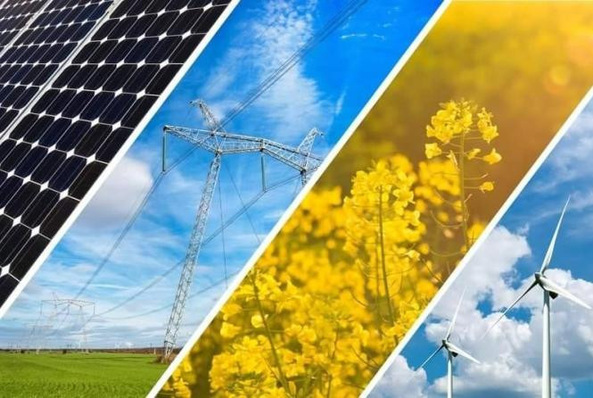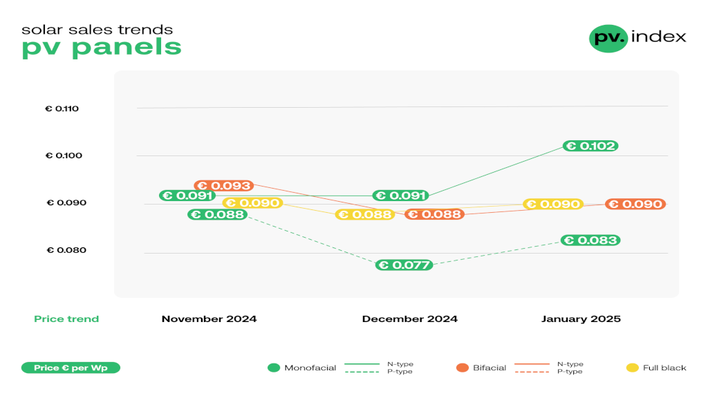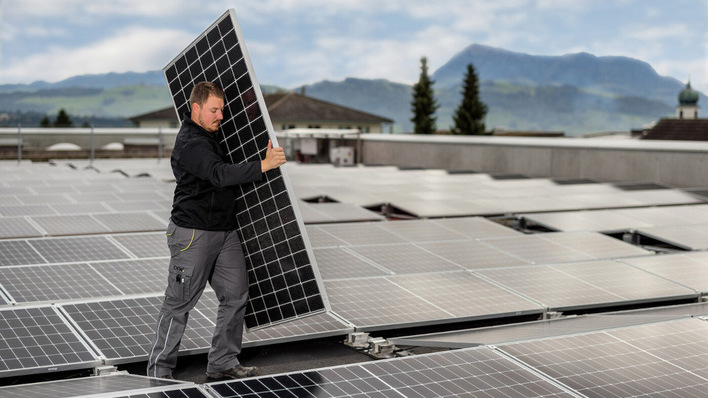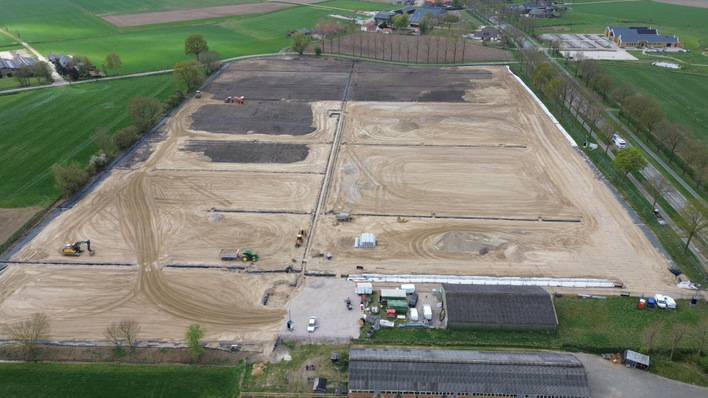Fuel cells are an early technology that has in recent years been developed to the series production stage, albeit still at very high prices. However, massive use is expected to cause prices to fall, parallel to the dynamics in photovoltaics and energy storage (i.e. lithium batteries).
As of late 2016, there is the support programme 433 of the Kreditanstalt für Wiederaufbau (KfW), which hands out lucrative subsidies, as a fixed amount to private users (for stationary fuel cell heating units of 0.25 to five kilowatts). In addition, some German federal states have initiated their own programmes.
A heater that generates electricity
The potential for price reduction is greater than with conventional (motorised) cogeneration (CHP), because the stationary fuel cells are constructed much simpler and more compact, and largely have no rotating or hot parts.
Stationary fuel cells belong to the cogeneration units (CHP), also referred to as power-generating heating. Classic CHPs generate both electricity and heat, whereby the generator is mounted to the drive shaft of a gas engine. The rotating generator produces alternating current (AC) and the waste heat of the combustion chambers is used for heating (water dependent heating).
In fuel cell cogeneration, however, the electrolytic splitting of water into hydrogen and oxygen is used to produce power by a cold method (without combustion). This results in DC voltage. If fuel cells are combined with conventional gas boilers, this is referred to as a fuel cell heating unit.
Just like any conventional CHP, this can be integrated into the building technology for power supply and heating. Fuel cells alone usually do not produce sufficient waste heat for integration into a water-dependent heating system, at least in existing installations using radiators.
Self-sufficient, even in winter
In combination with photovoltaic electricity and storage batteries, fuel cells solve the problem of being self-sufficient throughout the year. Once there no longer is sufficient sunlight, the fuel cell starts up and supplies the building. Most systems available on the market are designed to operate over long periods, i.e. they work throughout the year. If the demand for electricity goes up in the summer - resulting from a higher need for cooling and air conditioning - photovoltaics is added. Such combined systems are also very useful for the hotel and tourism industry, where consumption profiles vary strongly with the seasons.
Because hydrogen is not yet available locally to a sufficient degree and is not very easy to handle from a safety standpoint, the most common energy source is natural gas (methane). Soon it will be possible to generate hydrogen from water by electrolysis during the summer using excess solar electricity and to store it for the winter.
Charge electric cars at night
With the fuel cell it will also be possible to charge up electric vehicles as well as power electric heating units in the building. Following in the footsteps of photovoltaics, fuel cells will give strong momentum to the electrification of heating and individual transport, by providing sufficient electricity in the less sunny months.
Favourable profit margins for installing companies
The fuel cell supports private and commercial customers in attaining autonomy and self-sufficiency in their energy supply as much as possible. It is not strictly necessary to be connected to a gas network, temporary buffer systems can also store the hydrogen or natural gas.
These new units are one more product that promises to be profitable to specialised installing companies and fascinating to customers. Similar to storage batteries, it complements system technologies involving photovoltaics and is an addition to the electrical building services.
Just like motor-driven CHP, photovoltaics and electricity storage, the fuel cell is subject to the connection regulations for low-voltage electrical equipment. So this is one more opportunity for electricians and solar technicians to offer their customers comprehensive services for building technology. A fuel cell (in combination with a sufficiently large storage unit) even makes it unnecessary to connect the building to the grid.
Current market figures
The Fuel Cell Initiative (IZB) estimates that the German market will grow to 9,000 units by 2019. In the following three years (2019-2021), 6,000 to 8,000 fuel cell systems will be installed per year. From 2022, the IBZ expects 11,000 new systems per year. As Japan has proven, fuel cells can potentially sell massively: More than 100,000 are being used there.
The fuel cell committee at the VDMA expects that by 2025, more than 500,000 stationary fuel cell cogeneration plants will be in operation. This will take the combined output of all these units up to one gigawatt.
Prices are likely to fall steeply
The price trend will take a steep turn. After all, as sales increase, manufacturers will soon come out of the small-batch production range. In a survey among manufacturers, the VDMA has found that the production figures of 2,330 units in 2015 will rise to 185,836 units by 2020.
With increasing industrial production, the unit cost will decline. Whether the learning curve will be as steep as in the case of electricity storage or photovoltaic installations, remains to be seen. (Heiko Schwarzburger)
Read more about energy storage
Stay informed, get our free newsletter twice a week. Register here.
More useful information:
http://www.pveurope.eu/News/Energy-Storage/Fuel-Cells-Solar-energy-all-year-long
https://www.pveurope.eu/solar-storage/hps-picea-seasonal-energy-storage-fuel-cell

